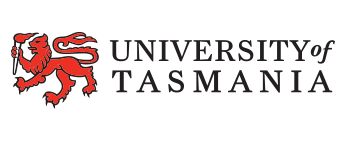For workers in the professional services industry, communication is key. Otherwise, business critical information is ...
LEARN MORESimplifying Collaboration in the Public Sector: How Video Conferencing Can Streamline Government Workflows
Government

The overarching aim of work in the public sector is to provide efficient and effective services to the broader community. However, in the modern workplace environment, staying true to these aims is seemingly more difficult than ever before.
With the rise of hybrid and even fully remote working arrangements, simple tasks that underpin the nature of public service now face barriers. Rather than easily coordinating meetings and further communication there are now geographical barriers to consider.
These geographical barriers mean that government workflow and collaboration is hindered. All of which dramatically impacts the services offered to the community. However, something as simple as video conferencing can streamline workflow and simplify collaboration.
By bridging the gap between remote workers and making inherently time consuming processes and procedures more straightforward, there are no barriers to communication and collaboration.
Simultaneously removing pain points associated with organising and attending public sector meetings and optimising communications, video conferencing aids collaboration in the modern workforce.
Streamlined workflows provide benefits across the board. Internally, workers operate more efficiently and effectively. Externally, the broader community is provided with high quality services.
The benefits
By simplifying collaboration and streamlining workflows within the government sector, video conferencing presents these organisations with a variety of different benefits. From improved productivity and accessibility to time and cost savings, work processes are revolutionised.
Remote working
Increased adoption of video conferencing is largely due to the technologies’ capability to facilitate remote working. While this was once seen as a temporary solution to worldwide changes, video conferencing is becoming a more permanent fixture in working environments.
This is largely because video conferencing technology allows people to not only work remotely, but do so effectively and efficiently. By being able to work from anywhere, both workplace morale and productivity increases.
Inter-agency communication
Inter-agency communication is essential in the public sector. This is because inter-agency communication is an all encompassing term. However, with traditional communication means, it can be time consuming to organise communication and even attend collaborative sessions.
In the hybrid working age, these tasks are only made more difficult. With the assistance of video conferencing technology, something as simple and as integral as communication can be organised and completed seamlessly.
Breaking down silos and improving coordination, video conferencing equipment means that everyone has access to the same communication channels. Whether coordinating with different government agencies and departments or communicating internally, the process is seamless.
This essentially means that communicating with workers, whether in large groups or in small quantities is as simple as sending out a meeting invite via email or hopping on to the communication platform for a chat.
By speeding up processes surrounding communication and collaboration, decision making is more efficient and effective. This ensures that project deadlines and the like can be consistently met.
Increased participation
Before hybrid working arrangements, there were always scheduling conflicts. This meant that some people missed meetings or delayed the start time of meetings. This change in start time may have even caused other participants to sign off early to meet other obligations.
With video conferencing, meeting participation increases. Regardless of location, individuals can attend meetings. If there are scheduling conflicts, meetings can be recorded and therefore played back.
On one level, this ensures that everyone involved in the organisation or the certain project team has access to the same information. On another level, it promotes everything from improved productivity and decision-making to accountability.
Improved accessibility
Video conferencing can also facilitate increased external participation. A key function of the public sector is communication and collaboration with the broader community. However, opportunities to engage in these tasks, such as town halls, can be scarcely attended.
By taking such meetings online, there are no barriers to attendance. Additionally, if the time still does not suit some residents, they can rewatch the recorded meeting at their convenience. All of which results in increased community participation and engagement.
This direct access to public figures through video conferencing also helps to keep workers accountable. No longer just an employee number or name behind an email, video conferencing humanises people and issues. All of which are driving factors to increased productivity.
This level of transparency also satisfies the community’s right and desire to be heard by local representatives. For public sector workers, this improved accessibility also presents as a way to effectively prioritise tasks and projects.
Time-saving
One of the key benefits to efficiency is that video conferencing results in time savings. By reducing the need for physical meetings, time does not have to be taken out of the work day to travel.
This allows workers to effectively re-distribute previously lost hours. All of which results in increased productivity levels. This is because a simplified approach to meetings means no more planes, trains or cars. Launching a meeting is now as simple as clicking a button.
While travel for meetings seems fairly innocuous, time spent in transit can add up. For example, consider the journey to the meeting and the journey home. If further travel is involved, consider the time spent waiting in the airport or train terminal and the subsequent travel to the meeting.
In some cases, this transit time could span hours. When put into perspective, the meeting may only be between 45 minutes to one hour. A streamlined process means that there is an increased level of efficiency to meetings. All of which helps to improve productivity.
Cost-savings
In the current working environment, businesses across a range of different sectors are required to do more with less. None more so than the government. As such, avenues related to cost-savings are highly sought after.
While video conferencing allows for time savings, there are also cost implications to consider. Travelling to and from meetings requires a financial investment. This investment will cover everything from the cost of transport to fuel allowances and even accommodation.
By reducing the need for in-person meetings, money can be re-distributed to other facets throughout the organisation. This redistribution of funds will provide the foundation government organisations need in order to keep fulfilling obligations and duties.
Transforming government processes in the digital age
Originally viewed as a platform to help overcome short term challenges, video conferencing is now regarded as the way forward for businesses. Whether operating in the finance, government or education space, video conferencing provides benefits that are integral to maximising operations.
Providing a bridge between remote and in-office workers, video conferencing encourages seamless communication. This is essential when you consider how integral communication is to government operations.
With communicating internally or with other government agencies, departments and employees essentially simplified, there are more working hours left in the day. And therefore, more opportunities for workers to efficiently and effectively contribute to the delivery of key community services.

Ibby works with businesses across QLD and NT to accelerate their video readiness. His aim is to replace the traditional challenges that accompany older style technology with confidence, simplicity and innovation through Logitech’s scalable solutions.
With over 15 years of industry experience, he loves finding the best solution within a client’s price range to ensure their workplaces are prepared to connect and interact seamlessly, no matter the location.
Ibrahim Kader
Enterprise Business Development Manager - QLD | NT












